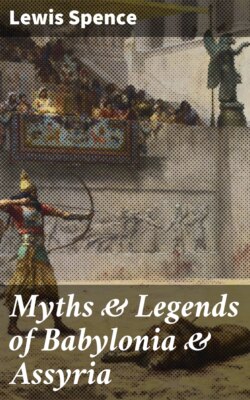Читать книгу Myths & Legends of Babylonia & Assyria - Lewis Spence - Страница 10
На сайте Литреса книга снята с продажи.
Gudea
ОглавлениеBut the empire which Sargon had founded was doomed to precipitate ruin. The seat of power was diverted southward to Ur. In the reign of Dungi, one of the monarchs who ruled from this southern sphere, a great vassal of the throne, Gudea, stands out as one of the most remarkable characters in early Babylonian antiquity. This Gudea (c. 2700 B.C.) was high-priest of Lagash, a city perhaps thirty miles north of Ur, and was famous as a patron of the architectural and allied arts. He ransacked western Asia for building materials. Arabia supplied him with copper for ornamentation, the Amames mountains with cedar-wood, the quarries of Lebanon with stone, while the deserts adjacent to Palestine furnished him with rich stones of all kinds for use in decorative work, and districts on the shores of the Persian Gulf with timber for ordinary building purposes. His architectural ability is vouched for by a plan of his palace, measured to scale, which is carved upon the lap of one of his statues in the Louvre.
There is no intention in this sketch to follow minutely the events in the history of Babylonia and Assyria. The purpose is to depict and describe the circumstances, deeds, and times of its most outstanding figures, its most typical and characteristic rulers. By following this plan we hope to be better able to present the reader with a more faithful and genuine picture of the civilization the myths of which we are about to peruse, than if we squandered space and time in the description of the reigns of kings during whose tenure of the throne no event of importance is recorded.
Basalt Stele engraved with the Text of Khammurabi's Code of Laws. The scene represents the King receiving the Laws from Shamash, the Sun-god—Photo W. A. Mansell and Co.
